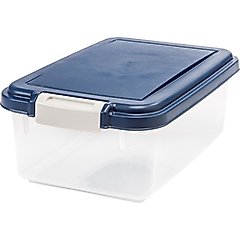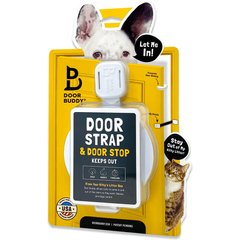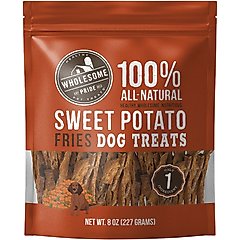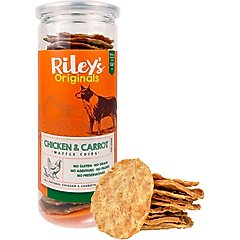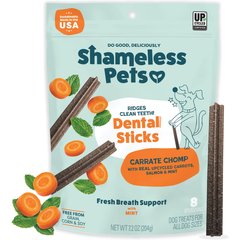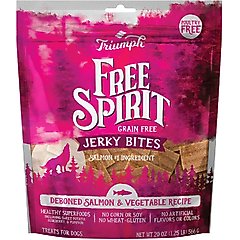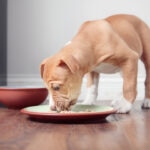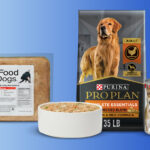Can Dogs Eat Garlic? Why Is Garlic Bad for Dogs?
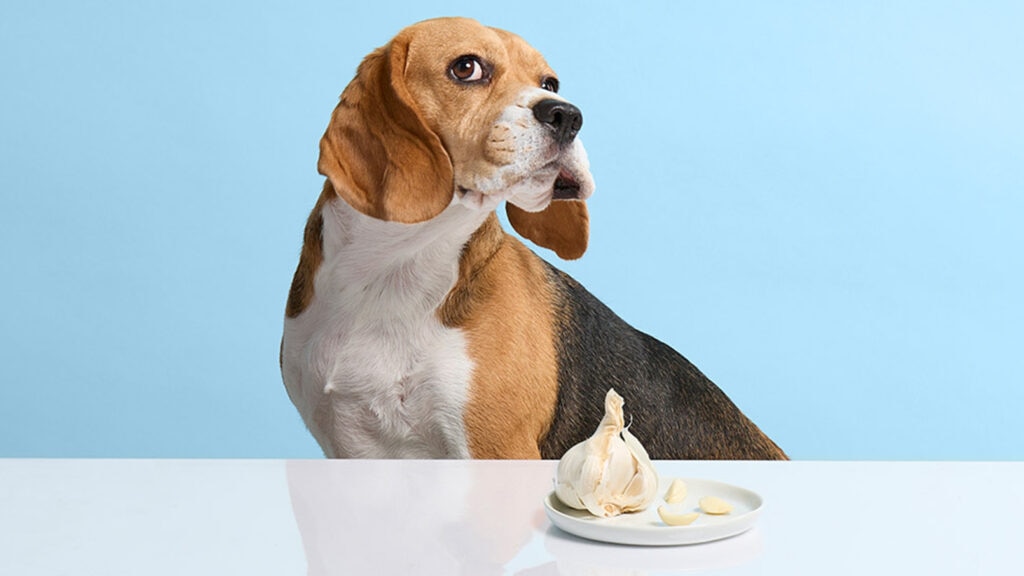
Photo by Chewy
As you enjoy your Friday night pizza, it’s tempting to share a bite with your dog—after all, pepperoni and cheese are usually a big hit with them! However, there’s one ingredient usually in pizza that you may be overlooking: garlic. Although it’s typically hidden in the sauce, it makes you wonder: Can dogs eat garlic?
While a taste might not cause immediate harm, garlic can be toxic to dogs, even in small amounts. So, it’s best to avoid giving it to your dog altogether. Here’s everything you need to know.
Did your dog eat a large amount of garlic? This is considered a medical emergency and you should take your dog to the vet immediately.
Key Takeaways
- Garlic is toxic to dogs (even in small amounts) and can cause serious health issues like hemolytic anemia.
- All forms of garlic, including garlic powder and garlic salt, should always be avoided.
- If your dog eats garlic, call your vet or the Pet Poison Helpline right away. Early treatment is crucial.
Can Dogs Have Garlic?
No, dogs should not have garlic. While small amounts of garlic may seem harmless to your pup, they can cause negative health effects over time. Large amounts can cause serious health issues and even be life-threatening if your dog doesn’t get proper, timely treatment.
That goes for all plants in the Allium family (i.e., leeks, onions, and chives), which are all toxic to dogs, says Samuel Varon, DVM, owner of Broadway Veterinary Hospital in Sacramento, California.
Can Dogs Eat Food With Garlic?
To be safe, dogs should not eat any food with garlic, no matter how small the amount. This includes pasta sauces, soups, roasted vegetables, marinades, pizza, and any food seasoned with it.
Can Dogs Eat Garlic Bread?
No, your dog can’t eat garlic bread. Not only is garlic the main ingredient, but it’s also often made with butter, oil, and herbs that can upset your dog’s stomach and even contribute to pancreatitis.
Can Dogs Eat Garlic Powder?
Garlic powder is also a no-no. It’s even more concentrated than fresh garlic, so ingesting a smaller amount can lead to toxicity, says Dr. Varon.
Why Is Garlic Bad for Dogs?
Garlic contains compounds called thiosulfates, which damage red blood cells in dogs by causing them to rupture—a process called hemolysis.
If enough of your dog’s red blood cells get destroyed, they can’t deliver oxygen effectively to vital organs and tissues.
This can lead to a dangerous type of anemia called hemolytic anemia, which can come on rapidly, says Valerie Savino, DVM, veterinarian at VEG ER For Pets in Larkspur, California.
Because dogs metabolize thiosulfates differently than humans, even a small amount of garlic can have serious effects.
How Much Garlic Is Toxic to Dogs?
According to Dr. Savino, the amount of garlic a dog can eat before it becomes toxic depends on:
- The weight of the dog
- The form of the garlic
- How often the dog is eating the garlic
Signs of toxicity typically appear after a dog eats at least 3 grams of garlic per kilogram of body weight. To put it into perspective, Dr. Varon says that even one clove of garlic can cause issues for smaller dogs.
Because the exact toxic dose is not well established, it’s important to call your veterinarian or the Pet Poison Helpline (855-764-7661, a fee applies) ASAP after your dog has eaten garlic.
What Are the Symptoms of Garlic Poisoning in Dogs?
Symptoms of garlic poisoning might not show up right away. According to Dr. Savino, they can take about a day.
If symptoms do show up, you might see your dog displaying signs like:
- Tiredness
- Pale gums
- Decreased appetite or a reluctance to eat
- Weakness
- Dark red/brown urine
My Dog Ate Garlic—What Do I Do?
Severe cases of garlic poisoning can be life-threatening, so it’s always better to be safe than sorry. Dr. Savino says the sooner you get to the vet, the better your dog’s chance of recovery.
If you know—or suspect—that your dog has eaten garlic, contact your veterinarian or an emergency veterinary clinic immediately. They’ll be able to determine if the ingested amount requires treatment.
When speaking to your vet, Dr. Varon recommends having the following information ready:
- The amount of garlic eaten
- The form of garlic consumed (raw, cooked, powdered)
- When the garlic was consumed
- Your dog’s weight and breed
- If your dog has any existing health problems
With that information, your vet will weigh the risks of possible treatments versus the risk of garlic poisoning.
If treatment is recommended, it might involve some or all of the following:
- Vomiting induction
- IV fluids
- Activated charcoal
- Blood transfusion
- Long-term monitoring of blood work for signs of anemia
Do not induce vomiting at home without veterinary guidance. Methods used at home all come with increased risks and sometimes severe side effects.
How Can I Prevent My Dog from Eating Garlic?
Preventing your dog from eating garlic is all about limiting opportunities for them to get near it.
Here are a few ways to keep garlic out of your dog’s mouth:
- Don’t share food seasoned with garlic. Even if they’re begging and it’s only a little bit, it’s not worth the risk.
- Store all forms of garlic out of reach. Put garlic in airtight containers, like the IRIS Airtight Storage Container, or use dog-proof latches, like the Door Buddy Door Latch, if you store your garlic in cabinets.
Recommended Products
- Double-check ingredient labels. Garlic can be hidden in unexpected places, like sauces, marinades, and frozen meats. Always double-check labels before giving human food to your dog, and avoid anything that lists garlic, garlic powder, or garlic salt as ingredients.
- Be mindful during food prep and cleanup. Garlic cloves, skins, and scraps can fall on the floor when you’re cooking. Clean up right away so your dog doesn’t sneak a bite.
- Keep trash secure. Dogs are notorious for digging through the garbage where they might find garlic-rich leftovers. Use a trash can with a locking lid or use a dog-proof clamp to keep things secure.
What Vegetables Can Dogs Eat?
While garlic is off limits, there are plenty of vegetables your dog can have.
Some dog-safe (and even beneficial!) veggies include:
You can also boost your pup’s veggie intake with dog treats. Some of our favorites that include vegetables are:
Recommended Products
FAQs About Garlic and Dogs
Can dogs eat cooked garlic?
No, dogs should not eat cooked garlic or raw garlic. Garlic in all forms should be considered toxic.
Can dogs eat garlic salt?
No, dogs shouldn’t eat garlic salt. Like garlic powder, it’s highly concentrated and can be toxic in small amounts. The salt can also increase the risk of dehydration and contribute to sodium poisoning, which can be life-threatening.
How much garlic can a dog eat?
There’s no exact amount of garlic that’s considered safe, so it’s best that your dog doesn’t eat it.
Is garlic powder bad for dogs?
Yes, garlic powder is a concentrated form of garlic that can be toxic even in small amounts. Keep garlic powder and any other garlic-laden spices away from your pup.
